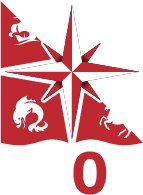How UBOC was Formed
Firstly, we contacted BOF to see if they had any funds/assistance that we could use. They gave use some information about grants, but it was clear that the first step was to form the club in the university's AU. We collected over 30 signatures supporting the proposal for an orienteering club (most, admittedly, signed under duress) and prepared a proposal to present to the Captain's Committee of the AU, a constitution and a risk assessment. The presentation to the Captain's Committee was successful so we were then an "associated club"- entitled to be an AU club but with no access to annual grants, apart from a capital grant at the start of the year, and a requirement to keep 30 members on the books. This lack of funding would be the case for 3 years. So we had a club with no members and no money. A committee was elected (3 people), a logo designed and long-term planning began.
We collected support through word-of-mouth, posters (Jo West and Erinna Foley-Fisher, consecutive captains, met because Jo signed her name on Erinna's poster), email, contacts in other AU clubs and societies. The most difficult part was always transport: we relied heavily on public transport for closer events, one club member's car and BOK. BOK offered support in every way that they could and without that, the club would have folded.
In 2007-2008, the club used its capital grant to buy mini training controls, SI cards, compasses and whistles. Kit was also designed and ordered, and sports clubs hoodies were made, mainly so that there would be walking advertisements on the university campus. We managed to plan trips to JK (multi-day events are the hardest to cope with) and attracted quite a substantial core of new, enthusiastic members.
This year, we had to deal with a new system of membership to AU clubs that required people to buy an AU membership card (£30) before paying membership to any club. Obviously this put many people off joining and means that we have to charge less for entries.
It should be noted that entrance to the AU is probably different now, but at the time it was difficult. Finding 30 members when orienteering is a niche sport and having to survive with no money to pay for e.g. equipment, transport is a major hindrance for us still. The university is not used to dealing with a sport like orienteering and frequently does not understand our needs. It is a constant fight for survival and dependent mainly on the enthusiasm of its members which has been incredible so far, especially those who did not know the sport before coming to university.
